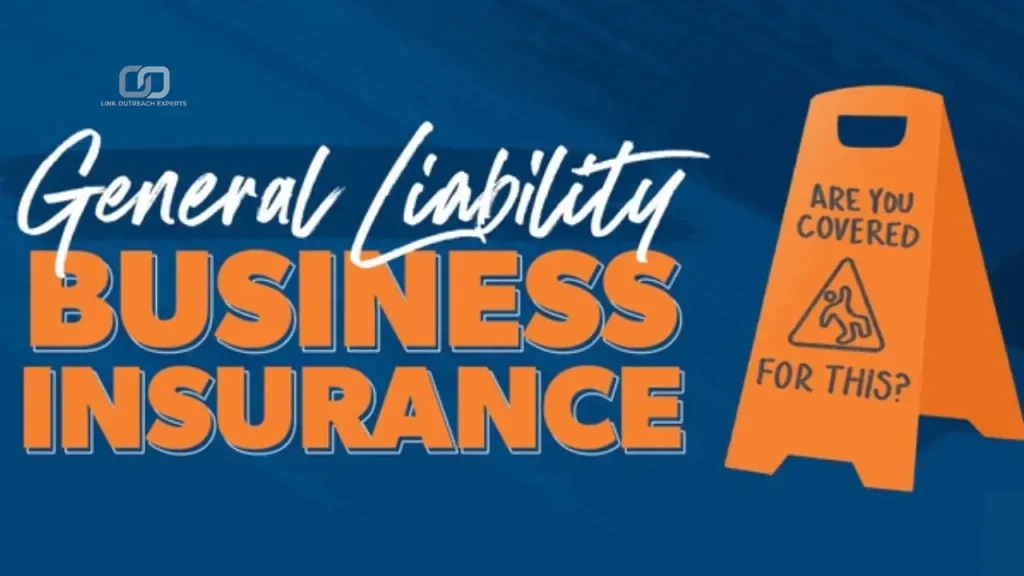Liability insurance protects businesses from financial loss due to legal claims. It covers expenses like legal fees, medical costs, and compensation for injuries or damages caused by the business’s actions. This type of insurance helps a business handle unexpected situations that could otherwise lead to financial trouble.
Having liability insurance is important for businesses because accidents and mistakes can happen anytime. Without coverage, a business may struggle to pay for damages or legal fees. It also provides peace of mind, knowing the business is protected against lawsuits.
Table of Contents
Types of Liability Insurance
There are several types of liability insurance that businesses can consider based on their needs.
General Liability Insurance
This insurance covers common risks like bodily injury, property damage, and advertising injuries (such as defamation). It is essential for businesses of all sizes as it helps pay for legal fees, medical bills, and any settlements if your business is found responsible for these issues.
Professional Liability Insurance
Also called errors and omissions (E&O) insurance, this type protects businesses that provide services or advice, like consultants, lawyers, or accountants. If a client sues for a mistake, negligence, or poor service, this insurance helps cover legal defense costs and any settlements.
Product Liability Insurance
This insurance is crucial for businesses that manufacture, distribute, or sell products. It protects against lawsuits related to defects in products that cause injury or property damage. It can cover legal costs, settlements, and medical expenses linked to product-related incidents.
Employers’ Liability Insurance
This insurance protects businesses if an employee gets injured or falls ill while on the job. It covers medical treatment, rehabilitation, and legal costs associated with workplace accidents or illnesses. Understanding insurance costs is key to success; you may also want to check how much is liability insurance for a small business for smaller-scale needs.
Cyber Liability Insurance
With the rise in cyberattacks and data breaches, this insurance covers the costs associated with protecting data, responding to breaches, and informing affected customers. It helps businesses that rely on digital tools or handle sensitive data mitigate the financial impact of cyber risks.
Average Costs of Liability Insurance
The cost of liability insurance can vary widely depending on the business’s size, industry, and location. For small businesses, the typical cost of general liability insurance is between $400 and $1,500 annually. However, this can change depending on the risk level associated with the business’s operations. Businesses in low-risk industries tend to pay less, while those in higher-risk industries may face higher premiums.
Medium to large businesses usually pay between $2,000 and $10,000 per year for liability insurance. The size of the business, including the number of employees and the revenue, significantly impacts the cost. A larger company may require higher coverage limits, which can increase the premium.
Industries like healthcare, construction, and manufacturing tend to have higher insurance costs due to the increased risks involved. The business’s location also affects the cost, as areas with higher claims rates or stricter regulations may lead to higher premiums. Additionally, a business with a history of claims may face higher insurance costs.
How to Reduce Liability Insurance Costs
Bundle Insurance Policies
Bundling multiple insurance policies with the same provider is a great way to lower costs. Many insurance companies offer discounts when businesses purchase more than one policy, such as general liability, property, and workers’ compensation. By combining policies, businesses can often save a significant amount while ensuring all their insurance needs are covered under one provider.
Improve Risk Management
Implementing strong risk management practices can not only help prevent accidents but also lead to lower premiums. Insurers are more likely to offer discounts to businesses that take steps to minimize risks, such as providing safety training, conducting regular inspections, or investing in security measures. The fewer claims a business files, the more likely they are to benefit from lower rates in the future.
Choose Higher Deductibles
Choosing a higher deductible is a simple way to reduce liability insurance premiums. A higher deductible means the business agrees to pay more out-of-pocket if a claim arises, but it can significantly reduce the cost of the premiums. While this can save money in the long run, businesses should ensure they can comfortably cover the deductible amount in case an incident occurs.
Shop Around and Compare Providers
It’s always a good idea to shop around and get quotes from multiple insurance providers. Different insurers may have different pricing models, and by comparing their offers, businesses can find the best deal. It’s important to consider not just the price but also the coverage and reputation of the insurer. Comparing policies helps ensure the business gets the most value for its needs.
Choosing the Right Liability Insurance for Your Business
1. Assess Your Business Needs
To choose the right liability insurance, start by assessing your business’s specific risks. Consider the nature of your operations, the industry you’re in, and the types of services or products you offer. Different businesses have different liabilities, so understanding your unique risks helps determine which type of coverage you need, whether it’s general, professional, or product liability.
2. Compare Insurance Providers
Not all insurance providers offer the same coverage options or pricing. It’s important to shop around and get quotes from different providers. Look at their policy details carefully to compare coverage limits, exclusions, and customer service. Choose an insurer with a solid reputation and experience in your industry.
3. Policy Terms and Coverage Limits
When selecting a policy, make sure to thoroughly review the terms and conditions. Understand what’s covered and what isn’t, and ensure the coverage limits are adequate for your business’s needs. If necessary, adjust your limits to provide enough protection in case of a lawsuit or claim.
4. Consider Additional Coverage Options
Sometimes, basic liability insurance isn’t enough. Depending on your business, you may need to add additional coverage, such as cyber liability insurance or employer’s liability insurance. Consider all potential risks that could affect your business and tailor the policy to cover those risks.
5. Seek Professional Advice
If you’re unsure about which insurance is right for your business, seek advice from an insurance broker or expert. They can help you navigate the options and find a policy that offers the right balance of coverage and cost for your specific needs.
Conclusion
Liability insurance is essential for protecting your business from unexpected legal and financial risks. The cost varies depending on factors like business size, industry, and location. Small businesses can expect to pay between $400 and $1,500 annually, while larger businesses may face higher premiums.
To reduce costs, consider bundling policies, improving risk management, or opting for higher deductibles. It’s important to compare providers and understand the coverage limits to choose the best policy for your business.


